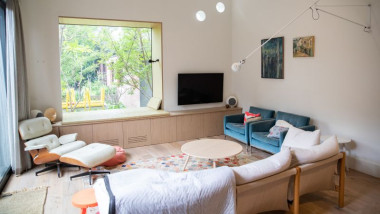New homes are getting smaller. That could be big news for first-time buyers
…
Compared to other countries, America is known for bigger cars, portions and take-out coffee cup sizes. For most of recent history, Americans have also wanted bigger homes — but now that’s changing.
For most of the last half-century, new single-family homes kept growing. In 1973, the median size of completed single-family homes was 1,525 square feet, according to US Census data. By 2015, that number had ballooned to 2,467 square feet.
But as the cost of buying a home has exploded and McMansions have fallen out of favor, homebuilders have reversed course, building smaller homes with an eye to first-time buyers. In 2023, the median single-family home built was 2,233 square feet, down 9% from the 2015 peak, with many formal dining rooms and “bonus” rooms disappearing.
Carias and her partner ultimately settled on a roughly 920-square-foot home. To maximize space, they decided to use the basement as their primary bedroom.
